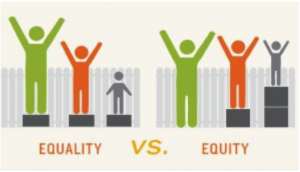A Fellow’s Insights on Diversity and Inclusion Awareness
 By Lars Parkin, 2015 ProInspire Fellow at Population Services International (PSI)
By Lars Parkin, 2015 ProInspire Fellow at Population Services International (PSI)
My working environment over the past five months has been more diverse than over the previous five years combined. While I would love to say that my diversity and inclusion awareness has increased through my day-to-day working relationships, it wasn’t until I participated in an internal diversity and inclusion work group at my partner organization and attended a workshop on diversity and inclusion that I truly woke up to the realities and meaning of the issues. I want to share my insights for the following reasons:
- It’s acutely relevant. Both in our professional and personal lives, from academia to business to entertainment, everyone seems to be talking about diversity and inclusion. Monisha Kapila, ProInspire’s founder and CEO, recently published an opinion piece highlighting the issue in What Nonprofits Can Learn From #OscarsSoWhite.
- It’s critical to understand the complexities (e.g. unconscious biases). Coincidentally, The New York Times published a piece on What Google Learned From Its Quest to Build the Perfect Team on the same day that Monisha’s op-ed ran, emphasizing why social sensitivity in the workplace is critical to cultivating a psychologically safe working environment.
- It’s important for everyone to participate. We are all stakeholders in structural inequality — regardless of race, class, or gender — and we must recognize that the same dynamics that create inequality for some, impart benefits to others. We all have a role to play in raising awareness and facilitating understanding for others.
The major takeaway from the workshop is that talking about diversity and inclusion can get “messy.” That’s OK. It’s expectedly uncomfortable, and exponentially better than doing or saying nothing. Once we start talking about it, what can we do to move the issue from awareness into action?
Start with an understanding of effective working groups. Two norms define effective working groups: equal distribution of conversational turn taking (i.e. team members speak in roughly the same proportion), and a high degree of social sensitivity. Plenty of research highlights the importance of cultivating a psychologically safe working environment, which increases the probability of a team becoming collectively more intelligent. In my experience, I have participated in and observed teams filled with smart people, all optimized for peak individual efficiency. Unfortunately, many of these teams faltered for reasons related to group norm dynamics: failed teams discouraged equal speaking, created psychologically unsafe environments, or, in the worst cases, did both.
Educate yourself on the issues of diversity and inclusion. The aforementioned articles are great foundational resources, as they not only examine the issue but they also reveal underlying research and additional sources of information.
Understand the difference between intent and impact. The hot-button topic of microaggression highlights the difference between intent and impact. No matter how good are one’s intentions, they should never excuse any negative impact incurred. For example, let’s say I’m introduced to a colleague who happens to have dreadlocks. I naïvely ask, “How do you manage such nice dreads? I love them!” While my intentions are seemingly in the right place, I may have negatively impacted my colleague and created a psychologically unsafe working environment right from the start. This may seem like a trivial example, but I have watched something similar play out countless times.
Strive for equity, not equality. Many people believe diversity and inclusion are matters of equality, but they’re really matters of equity. Equality aims to give everyone the same things to promote fairness and justice, while equity involves trying to understand and give people what they need. Equality is only fair if everyone starts at the same place and needs the same things. This is an important distinction as humans are very diverse, and we should understand and embrace our diversity in order to achieve equity. The following graphic resonates with me when attempting to conceptualize or articulate equality vs. equity:
I encourage everyone to engage in diversity and inclusion awareness. With greater awareness comes greater understanding, and with greater understanding comes action. I think you’ll be surprised by how the collective intelligence of your professional and personal relationships will increase.
Lars B. Parkin is a ProInspire Fellow at Population Services International (PSI), an international non-profit that makes it easier for people in the developing world to lead healthier lives and plan the families they desire by marketing affordable products and services. Lars serves PSI as a strategy analyst, focusing on global/corporate strategy. Prior to PSI, Lars spent nearly six years working as a financial restructuring and turnaround management consultant. He started his career as a bulk dry cargo ship broker in Europe.

